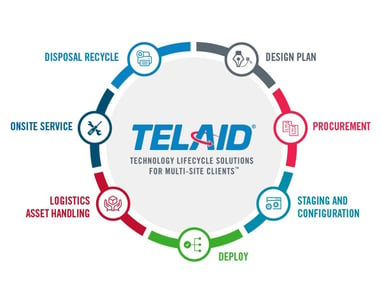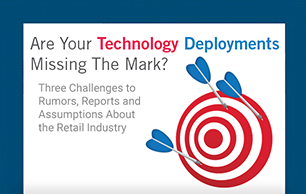Tremendous time, effort and resources go into selecting, planning and deploying technologies. However, rolling out technologies is only the beginning of the ongoing process of managing IT assets throughout their lifecycle.
 Too often, once technologies have been selected, purchased and implemented, companies fail to direct attention and resources to maintaining these technologies throughout their entire lifespan. Trouble is, technologies require evaluation, maintenance and monitoring if they are to perform dependably for the maximum possible lifespan.
Too often, once technologies have been selected, purchased and implemented, companies fail to direct attention and resources to maintaining these technologies throughout their entire lifespan. Trouble is, technologies require evaluation, maintenance and monitoring if they are to perform dependably for the maximum possible lifespan.
Companies that practice asset lifecycle management can extend the life of their technologies, increase ROI on their technology investments and generally reduce the frustration associated with information-finding fire drills. What is asset lifecycle management and why is it important to your company? There are several critical components of a comprehensive asset lifecycle management program.
Full inventory of IT assets
Knowing what you have, where it is, and the condition that it’s in is half the battle. When a new location or office is opening, the mission is to get the operation up and running on time. With that sole goal in mind, IT teams often don’t have time to go digging for a list of technology assets that are available or in storage and often just order unnecessarily redundant equipment. With a fully documented inventory of all assets, their locations, and a centralized storage place, companies can easily identify, locate and consolidate available equipment, saving untold amounts on unneeded equipment.
Detailed specifications
Chances are, if you’re a large company, you have multiple different assets, all different ages, brands, even operating systems. By keeping detailed information about operating systems, age of equipment and brand, it’s easier to manage upgrades, updates, warranties. It’s also important to maintain system upgrades to software to ensure interoperability with the latest products. For example, if a vendor releases a new camera or firmware for a camera, the corresponding software upgrade for the video management software will enable continued interoperability between camera and software. Failure to download updates may result in software that is unable to support the new camera or firmware. In short, to ensure optimal performance, it’s critical to stay current with software upgrades.
Support and maintenance
Maintenance is an unavoidable part of managing IT assets. Failure to anticipate failures, breaks or outages is folly. It’s important to be strategic about support and maintenance. That may mean investing in custom contracts, extended warranties or other methods for making repair and replacement a budgeted, pre-planned part of asset management. With so many options in the market today, there is no reason not to purchase repair and maintenance or replacement options for mission-critical equipment that could result in hundreds of thousands in losses every day that they are down. Along with asset inventory, it’s a good idea to leverage outdated or broken equipment for parts that can be used to repair other devices in simple repair.
Regular maintenance should also include keeping up with the latest device firmware and software system releases. These updates often provide patches for identified vulnerabilities and help protect the system against security breaches.
Settings and configuration information
Settings on everything from PCs to servers to cameras are dependent on their location and use. Proper configuration of equipment is critical to optimal performance in the field. By automatically retaining configuration and staging files when a device is configured, it’s possible to compile a consolidated log of settings for future use. It also enables easier repair and/or replacement of devices, as they can be reconfigured for turnkey onsite replacement.
Network devices often have the capability to send information about changes made in the field to a centralized database, ensuring that information is accurate and fully updated so that new equipment being sent into the field is properly pre-configured. In addition, retaining serial information for hardware makes it easier to maintain hardware warranties and perform RMA replacements.
Secure disposal
Uninstalling and processing equipment at the end of usefulness is a part of managing technology. However, simply uninstalling equipment and throwing it in a box in the back room subjects businesses to risk. Many IT devices contain sensitive information – even personal or financial information – that, if obtained and misused, could cost the company enormous sums in legal fees and/or damage to the brand. In the face of growing environmental regulations, it’s also important to dispose of electronics in a responsible way. Companies should plan for secure, sustainable disposal of IT equipment at the end of life and partner with trusted resources to handle end-of-life asset management.
The benefits of asset lifecycle management include extended equipment life, significant cost savings, time savings associated with better organization, and reduced risk associated with improper handling. You spend so much time researching, selecting and vetting technologies, don’t forget to plan for management of your IT assets across the 2 – 20 years during which they will be used.




